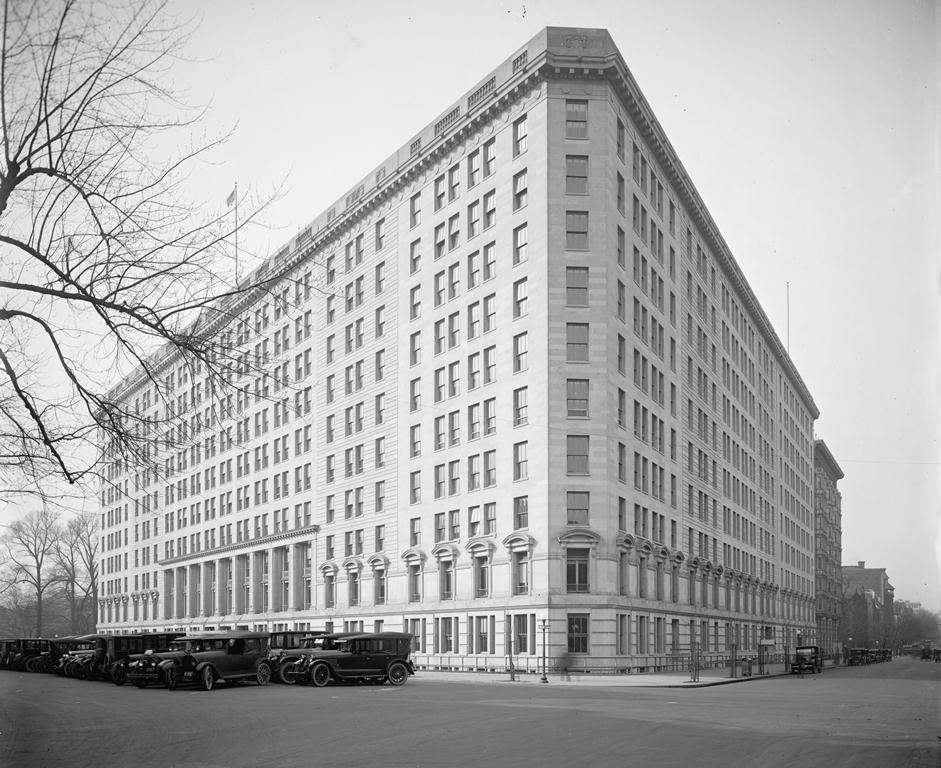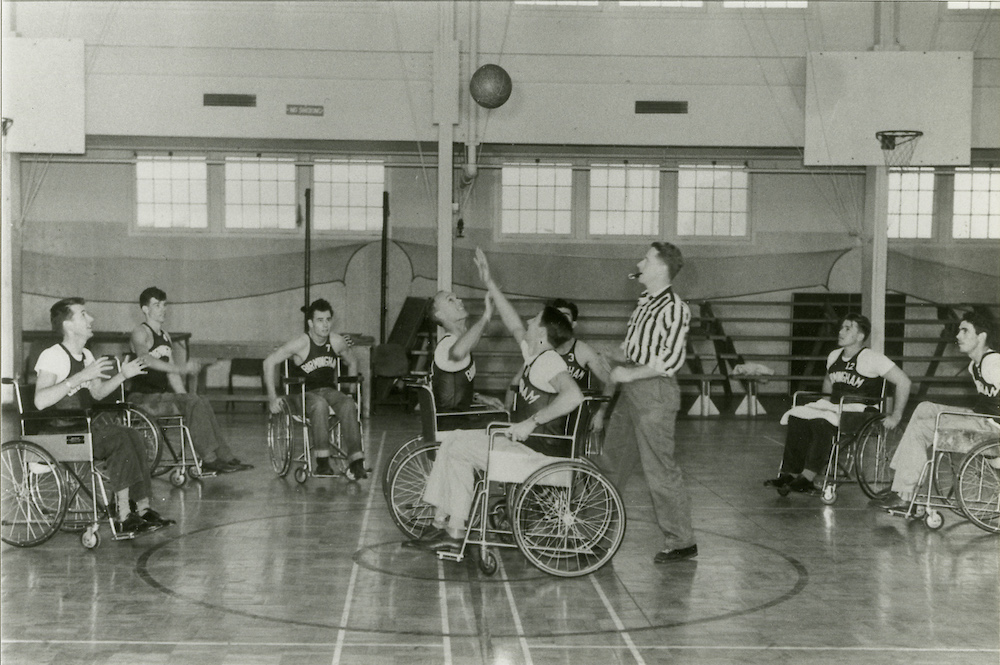
When World War I erupted in Europe in August 1914, the United States stayed neutral but the nation quickly became a major supplier of industrial and agricultural goods to France and England. To protect this valuable trade, Congress established the Bureau of War Risk Insurance (BWRI) within the Treasury Department to insure American ships and cargo “against loss or damage by the risks of war.” After the United States officially entered the war in April 1917, BWRI’s functions expanded dramatically. At the insistence of Treasury Secretary William G. McAdoo, Congress made BWRI responsible for administering the array of benefits the government offered to the soldiers and sailors serving in the war. The benefits included a supplemental allowance to dependents of enlisted personnel who allotted part of their own pay to this purpose, compensation for death and disability, and government-subsidized insurance. McAdoo wanted oversight of these programs out of the belief that his department would be a better steward of the governments’ money than the Department of Interior’s Pension Bureau, which managed benefits for Veterans of earlier conflicts.
Almost overnight, the BWRI found itself transformed from a small, largely anonymous office with a staff of about twenty into one of the most important and high-profile agencies in the federal government. Its scope of activities was enormous. From the time it took up its new duties in October 1917 through June 1918, BWRI mailed out over 3.2 million checks totaling about $97 million to the families of servicemen participating in the allotment and allowance program. By October of that year, BWRI had also logged applications from more than 4 million soldiers and sailors for insurance that indemnified them against death or total disability to the amount of almost $36 billion or $8,700 per policy.
To handle its vastly increased workload, the BWRI embarked on a mad scramble from late 1917 through 1918 to hire thousands of additional employees. By February 1918, the agency had 2,300 people on its payroll, but that was nowhere near enough to process the applications, claims and other paperwork that flooded its offices. By July, close to 7,000 men and women were on the job and the numbers continued to grow. The bureau tried to increase efficiency and improve output any way it could. It organized clerks into day and night shifts, set up its own training program for new typists, and brought aboard teachers from local schools and college professors on summer break as temporary labor. The agency also employed a variety of labor-saving mechanical devices such as such as addressographs to eliminate typing of envelopes, automatic typewriters, and check-printing machines that could churn out 60,000 checks a day.

The BWRI’s ever expanding workforce quickly exceeded its allocated offices in the Treasury Building in Washington, forcing the agency to park the overflow wherever it could find vacant space. The bureau’s 1918 annual report to Congress ruefully stated that its employees “have been housed in 15 separate structures, most of them poorly adapted to the work.” In one of these structures, the city’s Center Market on Pennsylvania Avenue, the agency installed some 600 clerks in the unheated dance hall on the building’s top floor. During the winter, these hapless workers experienced “adverse conditions, which sometimes approached actual hardship,” a Washington newspaper reported. Equally unfortunate were the BWRI employees who set up shop in a garage in the business district.
The agency’s staff found far more comfortable accommodations at the Smithsonian’s new National Museum (now the National Museum of Natural History). Construction on the building had been completed just before the war in 1911. At the direct request of President Woodrow Wilson in the fall of 1917, the museum made available to the bureau 25,000 square feet on the first floor. However, the Secretary of the Smithsonian, Charles D. Wolcott, rebuffed the president’s appeal for yet more space on the second and third floors out of concern for the safety of its collections. At first, the museum remained open to visitors even as BWRI clerks labored away at makeshift desks in the foyer and adjoining rooms. In July 1918, the president came calling again and this time Smithsonian officials agreed to turn over the entire building to the government.
The takeover of the National Museum was only temporary, however, as Treasury Secretary McAdoo had already secured a new home for the bureau. Earlier in the year, McAdoo had negotiated the purchase of the 11-story building going up on the site of the old Arlington Hotel on Vermont Avenue by the White House. The $4.2 million price tag raised some eyebrows in the press, but the acquisition solved the BWRI’s office space problems once and for all. The bureau began moving personnel into the building in February 1919. Most of the work of transporting the agency’s voluminous files and records occurred at night so as to minimize the disruptions to its operations.
The Bureau of War Risk Insurance survived the war by only two and a half years, replaced in 1921 by the Veterans Bureau. However, from the time BWRI took occupancy in 1919 to the present, the building on Vermont Avenue building has remained the headquarters of the federal agency – from the Veterans Bureau to the Veterans Administration to the modern-day Department of Veterans Affairs – charged with delivering government benefits and services to Veterans.
By Alexandra Boelhouwer, Virtual Student Federal Service Intern, Veterans Benefits Administration, and Jeffrey Seiken, Ph.D., Historian, Veterans Benefits Administration
Share this story
Related Stories
History of VA in 100 Objects
In the waning days of World War I, French sailors from three visiting allied warships marched through New York in a Liberty Loan Parade. The timing was unfortunate as the second wave of the influenza pandemic was spreading in the U.S. By January, 25 of French sailors died from the virus.
These men were later buried at the Cypress Hills National Cemetery and later a 12-foot granite cross monument, the French Cross, was dedicated in 1920 on Armistice Day. This event later influenced changes to burial laws that opened up availability of allied service members and U.S. citizens who served in foreign armies in the war against Germany and Austrian empires.
History of VA in 100 Objects
Basketball is one of the most popular sports in the nation. However, for paraplegic Veterans after World War II it was impossible with the current equipment and wheelchairs at the time. While VA offered these Veterans a healthy dose of physical and occupational therapy as well as vocational training, patients craved something more. They wanted to return to the sports, like basketball, that they had grown up playing. Their wheelchairs, which were incredibly bulky and commonly weighed over 100 pounds limited play.
However, the revolutionary wheelchair design created in the late 1930s solved that problem. Their chairs featured lightweight aircraft tubing, rear wheels that were easy to propel, and front casters for pivoting. Weighing in at around 45 pounds, the sleek wheelchairs were ideal for sports, especially basketball with its smooth and flat playing surface. The mobility of paraplegic Veterans drastically increased as they mastered the use of the chair, and they soon began to roll themselves into VA hospital gyms to shoot baskets and play pickup games.
History of VA in 100 Objects
After World War I, claims for disability from discharged soldiers poured into the offices of the Bureau of War Risk Insurance, the federal agency responsible for evaluating them. By mid-1921, the bureau had awarded some amount of compensation to 337,000 Veterans. But another 258,000 had been denied benefits. Some of the men turned away were suffering from tuberculosis or neuropsychiatric disorders. These Veterans were often rebuffed not because bureau officials doubted the validity or seriousness of their ailments, but for a different reason: they could not prove their conditions were service connected.
Due to the delayed nature of the diseases, which could appear after service was completed, Massachusetts Senator David Walsh and VSOs pursued legislation to assist Veterans with their claims. Eventually this led to the first presumptive conditions for Veteran benefits.






